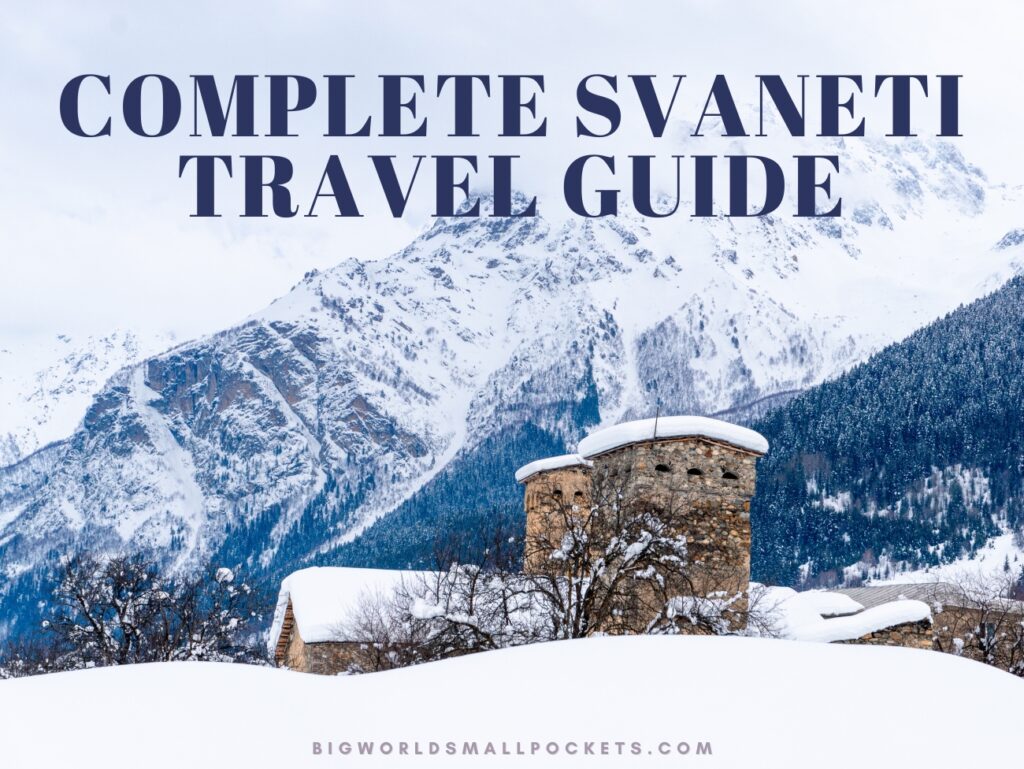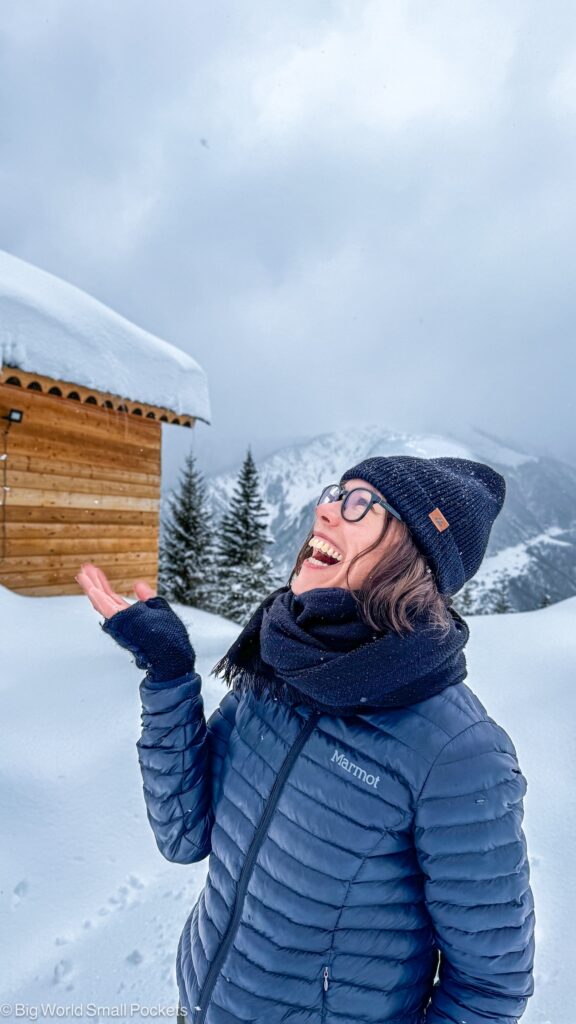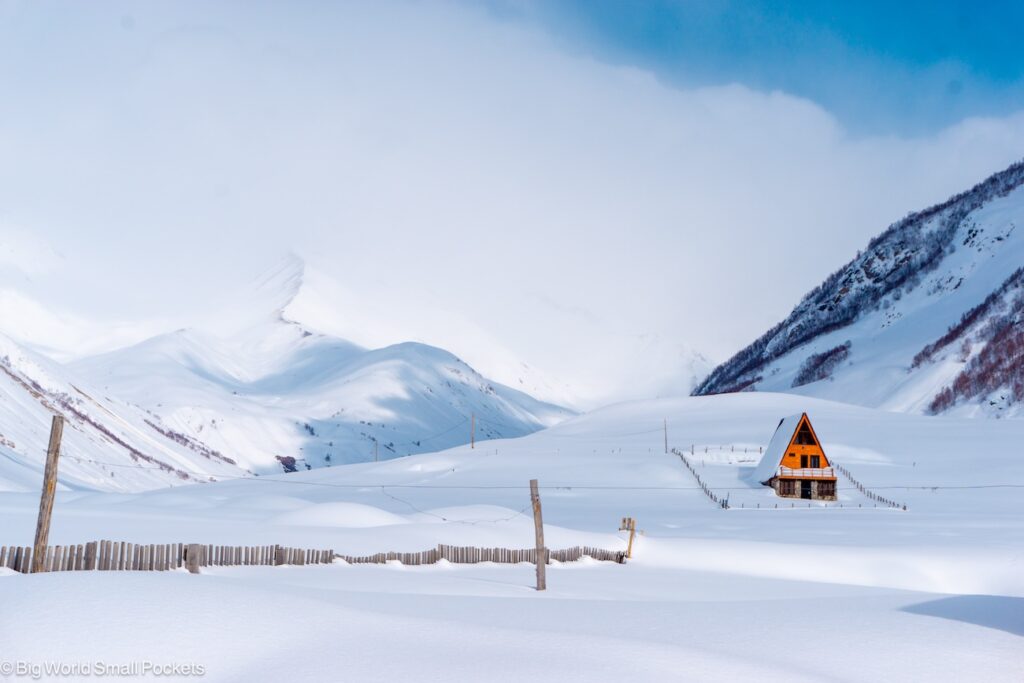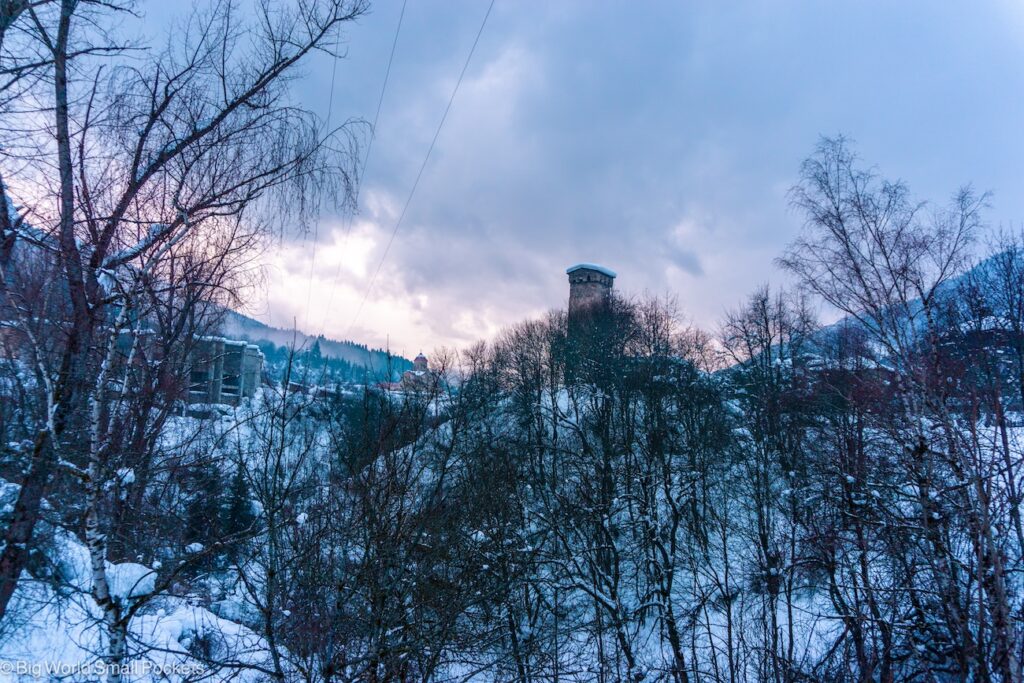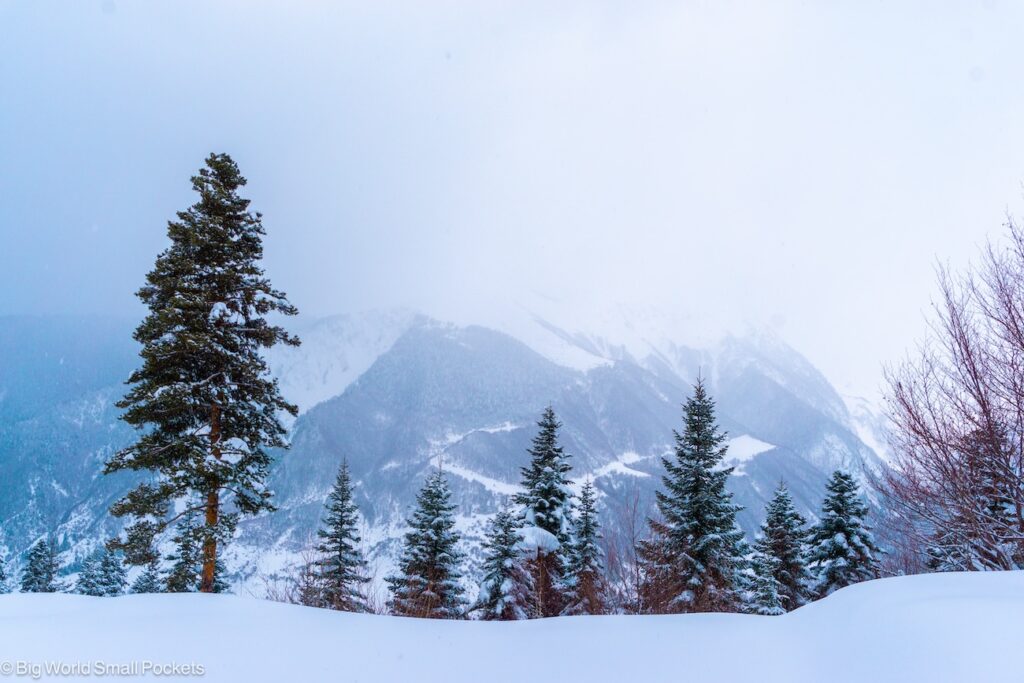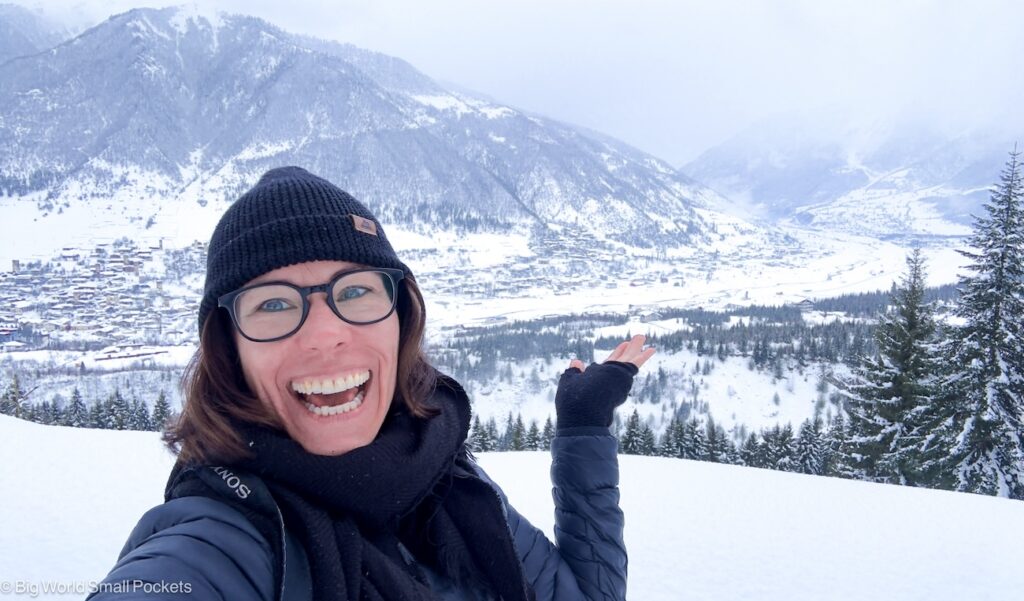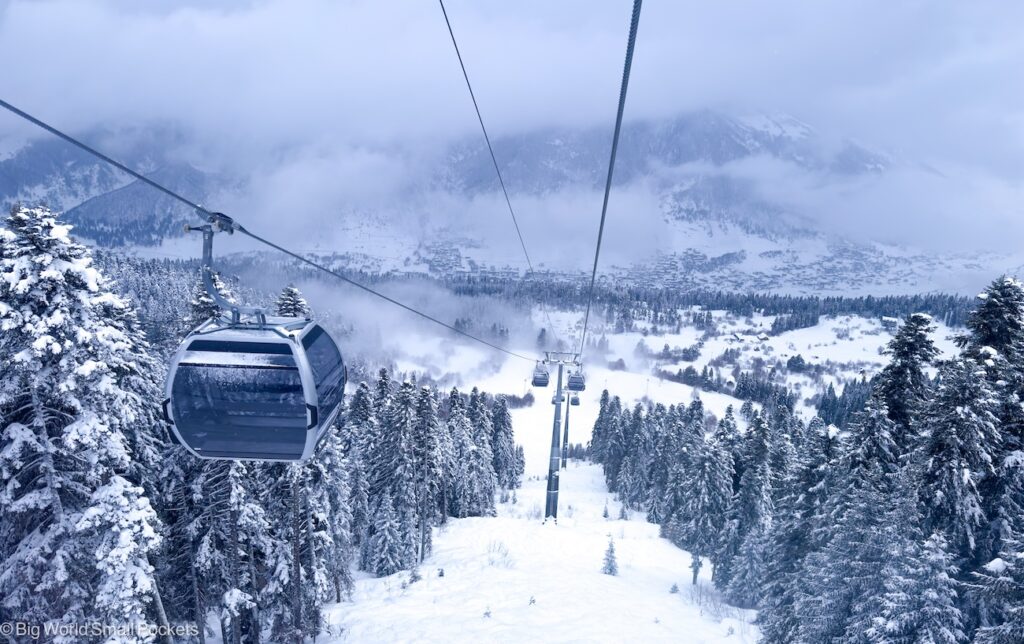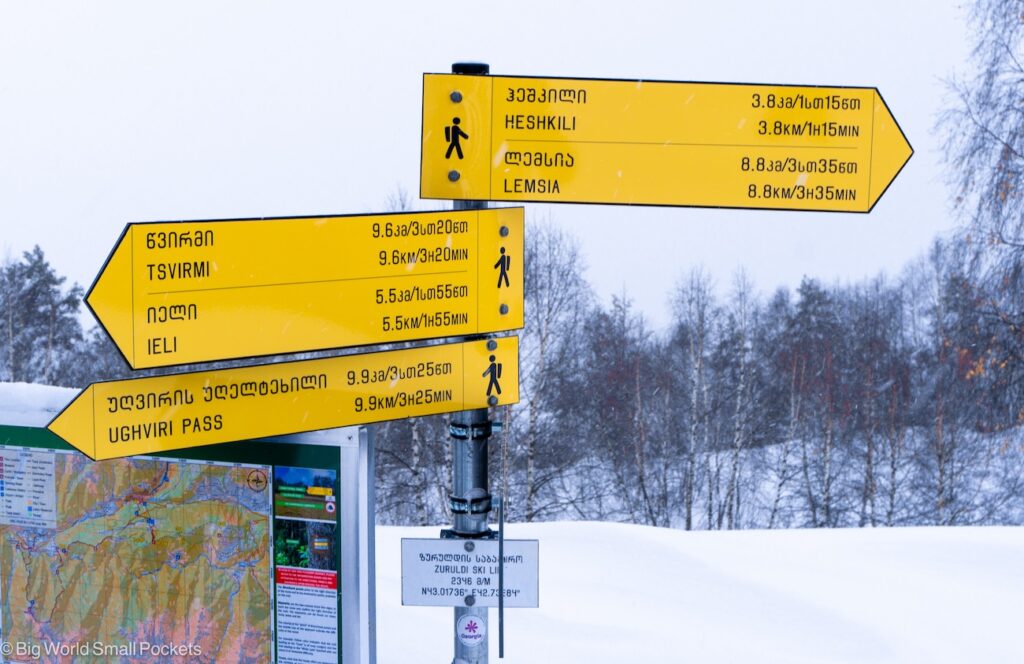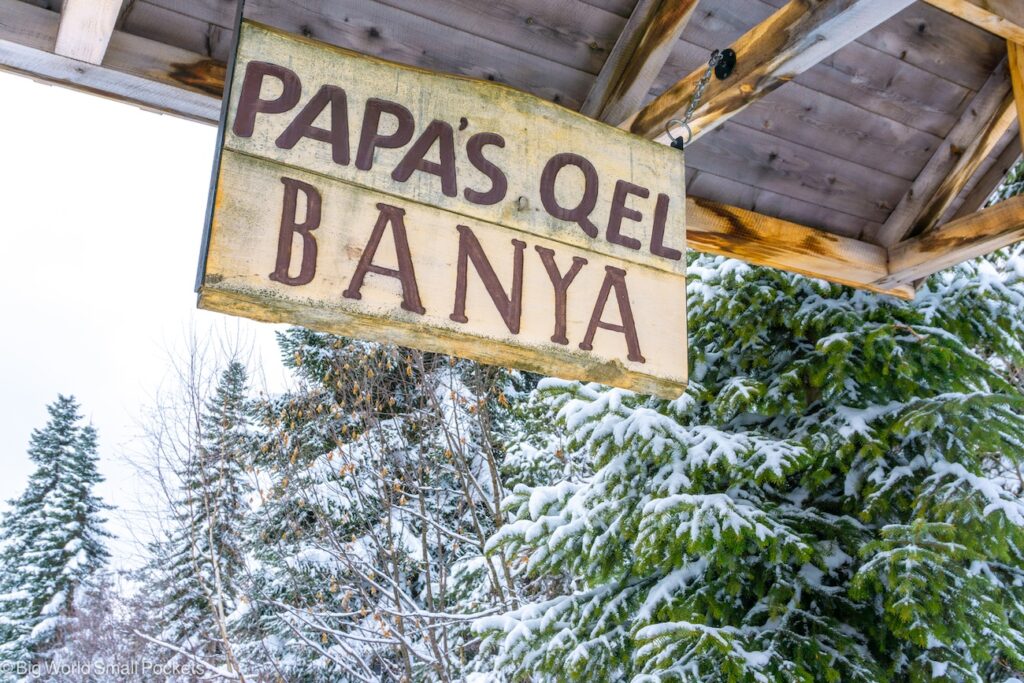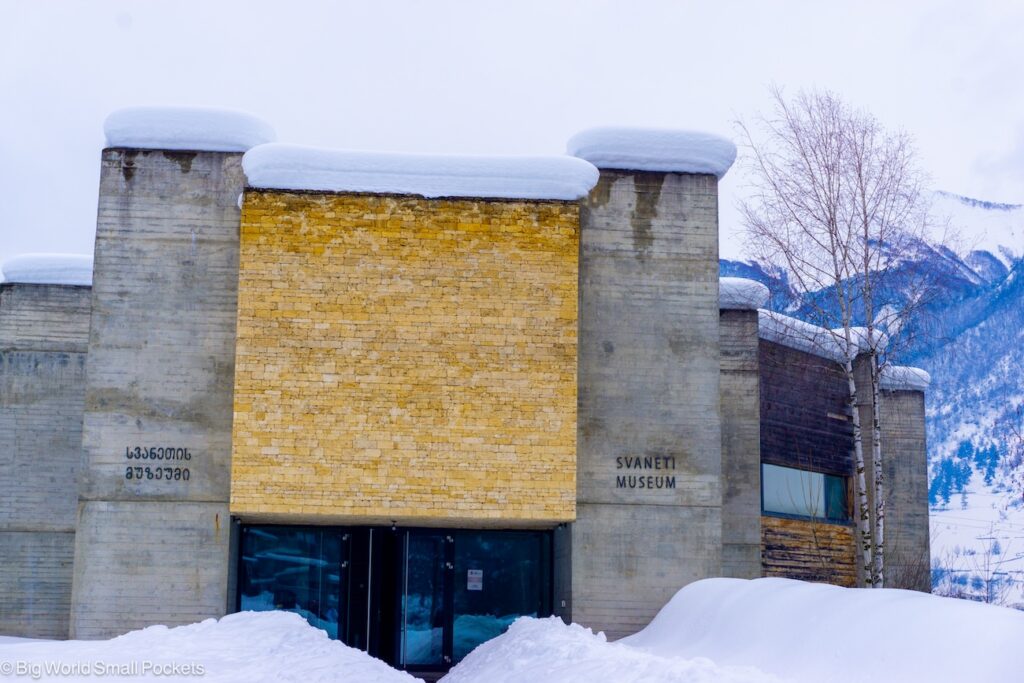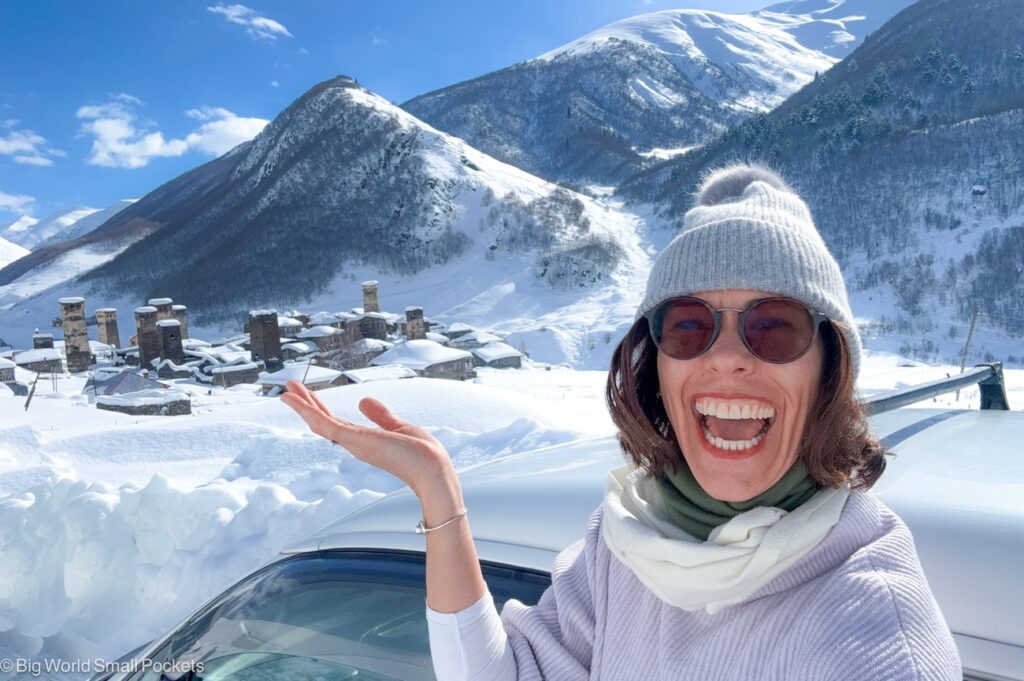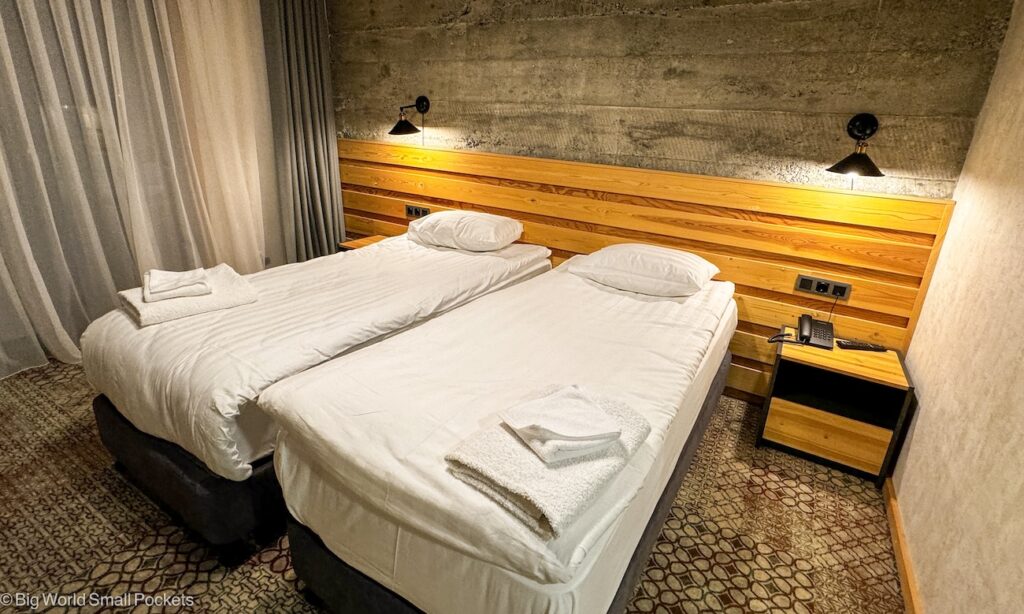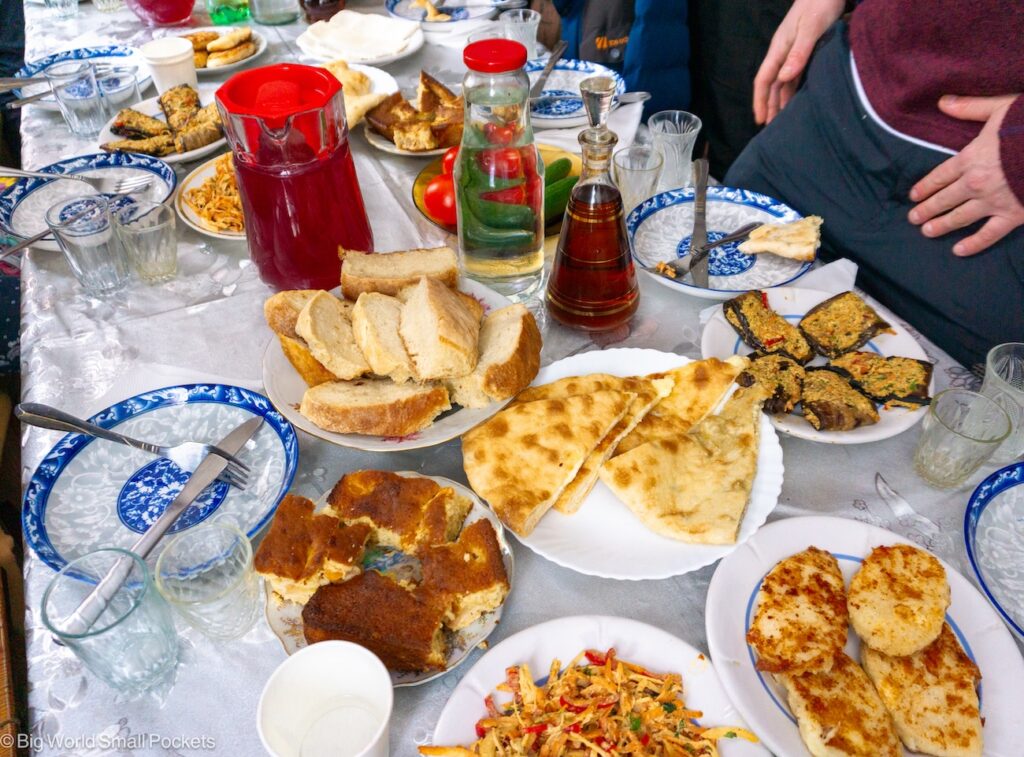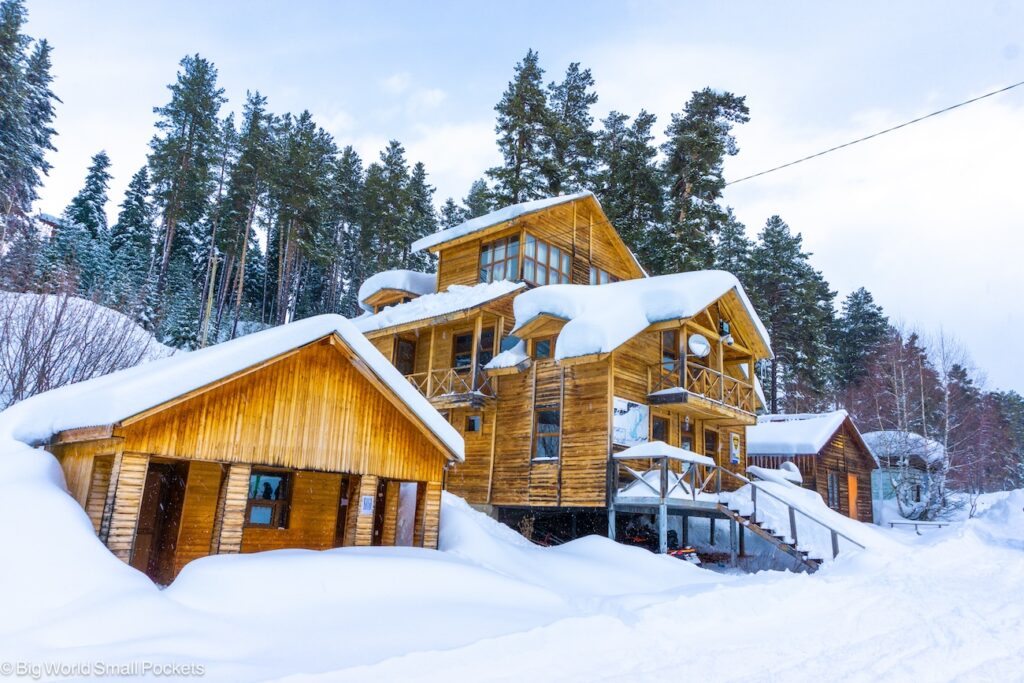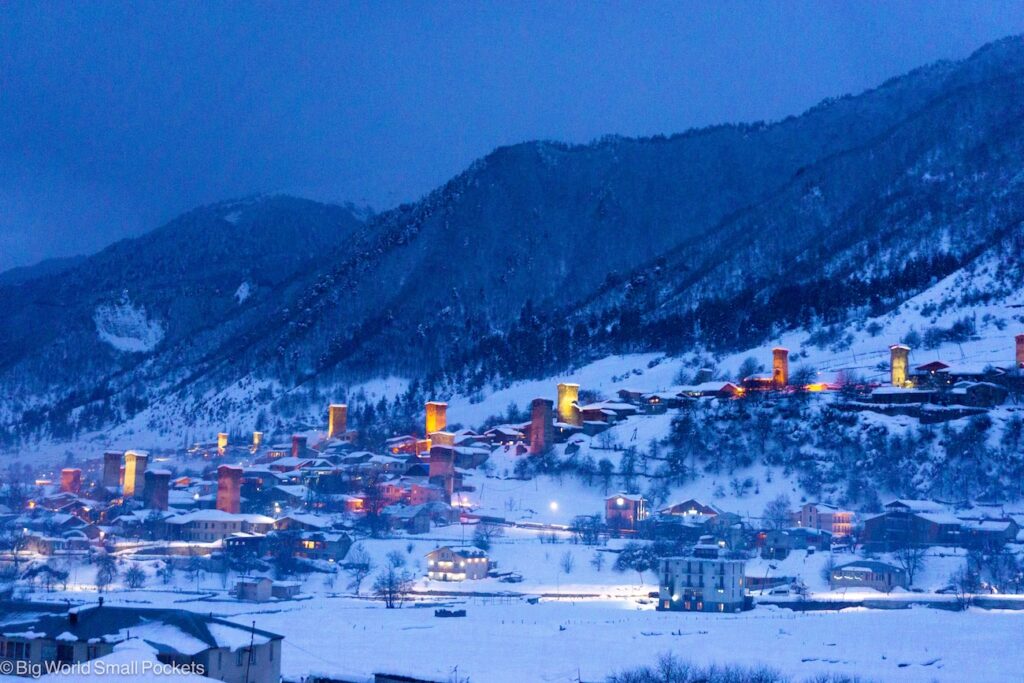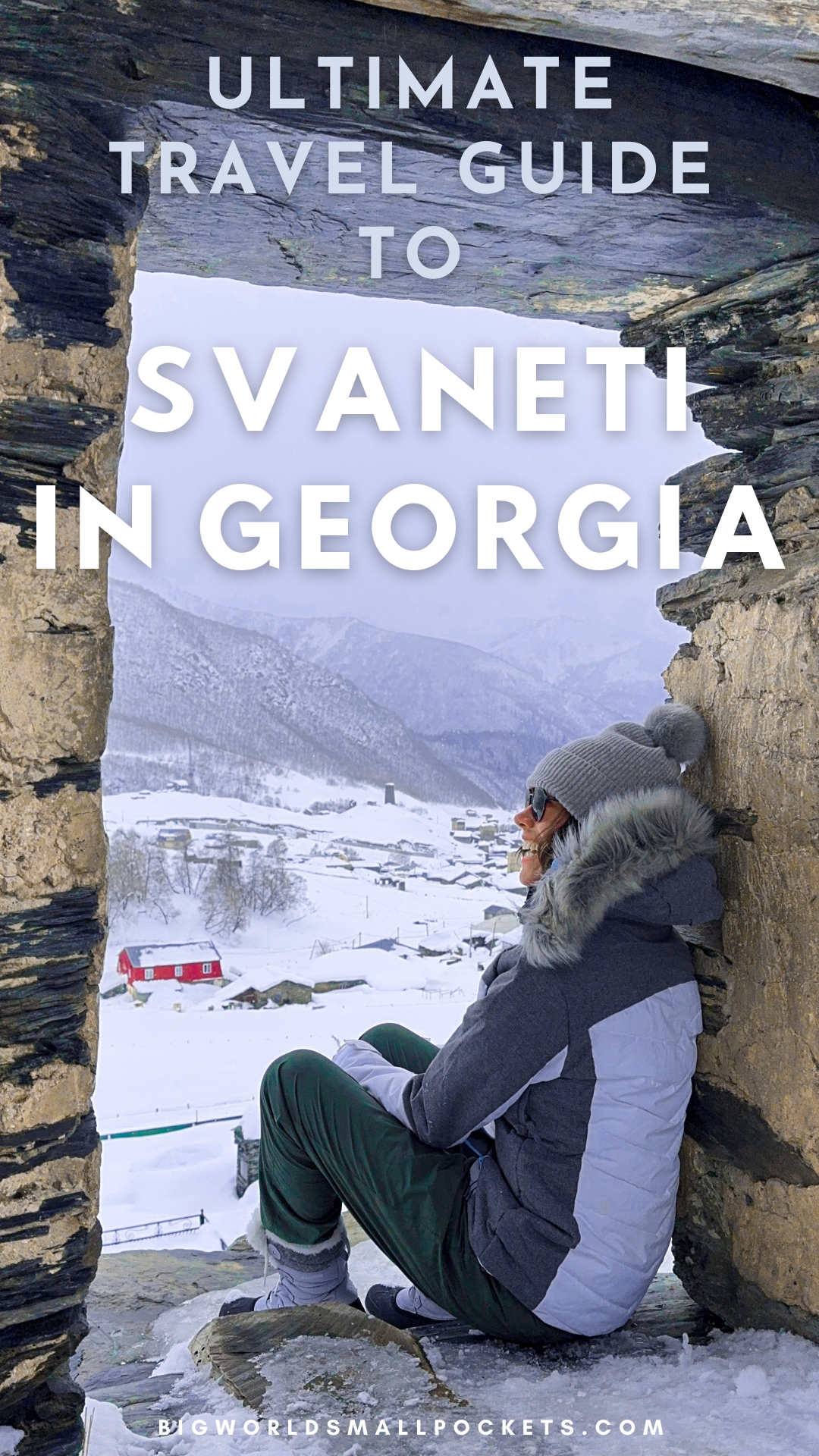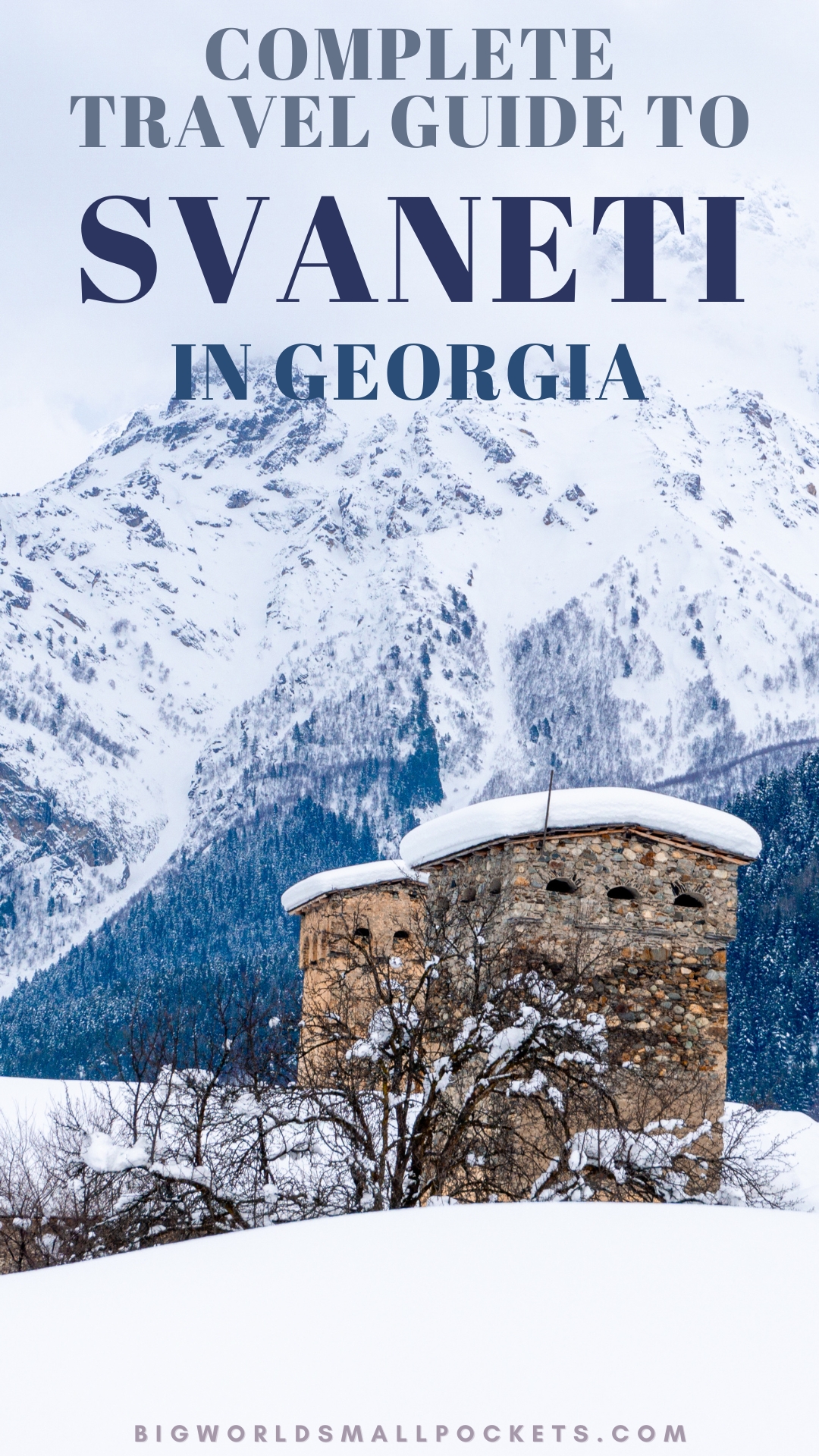It wasn’t until my second visit to Georgia that I finally got to visit the fabled Svaneti region of the country – a part of this Caucasus country that had been on my bucket list for ages.
Famous for its unique culture and history, iconic Svan towers, epic hiking and remote mountainous landscape, just about everything in a destination I look for, Svaneti had… well apart from a beach maybe!
So why I hadn’t I visited on my first trip to Georgia?
Well, quite simply, I ran out of time!
Located over 8 hours by road from Tbilisi in the remote northwest of the country, during my initial trip to Georgia, I only had time for one of the country’s mountain areas and chose the fantastic Tusheti in the northeast of the country instead.
This meant that on my second trip to Georgia, Svaneti was top of the list!
And it did not disappoint.
Read on to learn all about my mad adventure to this part of Georgia and why you should visit this incredible area too…
Related Posts
- 9 Best Places to Visit in Georgia
- Ideal 2 Week Georgia Itinerary
- Full Travel Guide to Kazbegi Georgia
Why Visit Svaneti?
The reasons to visit Svaneti are quite simple.
Concisely put, it’s one of the most remote, unique and beautiful mountain regions in Europe.
Yes up in the High Caucasus, the elevated and dramatic landscape here is as pristine as it is peaceful.
Almost entirely situated above 1800m, the region is divided into Upper and Lower Svaneti, with most tourists spending their time in the more striking Upper area, where the regional capital of Mestia is located.
That said, both parts of Svaneti are beautiful, and no matter whether you visit in warm summer or snowy winter, you’re in for a treat!
Lush with wild flowers and alpine meadows in the spring months, glistening under blue skies in the summer, and covered in fresh white snow during the winter months – photographers and intrepid explorers especially will love it here.
And that has a lot to do with the fact that Svaneti lies far off the beaten track of Europe.
Incredibly affordable as a result, and boasting year round activities, this region of Georgia is a delight for those who enjoy outdoor activities (thinking hiking through skiing) as well as adventurous escapes in some seriously stunning natural landscapes.
Svaneti also has a unique culture, cuisine, language and history that is well worth discovering through the area’s museums and activities, not to mention a hefty dose of UNESCO list ticking in the form of Ushguli too.
Known for their unique architecture, the 5 picturesque villages of Ushguli all feature the region’s distinguishable Svan Towers that you’ve likely seen in photos.
Basically if you like pretty adventurous destinations not many people to go to, and you love a good mountain view and a sturdy dollop of alpine air, then Svaneti is probably for you!
Svaneti History, Culture & Language
Some blogs love to go into the history of a place, but I think it’s always better to save the detail for when you get there – if you’re anything like me you’ll forget it anyway!
The other point is that history takes on a lot more significance when you’re physically in a place, which means in this section on Svaneti history and culture, I’ll just stick to giving you just a basic overview.
Let’s start with the fact that Svaneti is a very distinct area of Georgia, populated by the close-knit Svan people, who have had a reputation for being fearless warriors since they first constructed Medieval villages here.
Part of the Georgian Kingdom in the 11th century, Svaneti flourished under Queen Tamar, who is said to have fallen in love with region – hence her Castle in the village of Ushguli.
After the decline of Georgia and the subsequent invasions by the Persians, Ottomans and Mongols, Svaneti became a safehouse, proving impenetrable to all these forging groups and therefore used as a secure spot to store many of the former kingdom’s treasures.
For this reason, Svaneti has an almost mythological status in the cultural narrative of Georgia that persists even to today.
Due to its mountainous geography, Svaneti has been simultaneously both a part of, and separate from, the main Georgian territory throughout history, and has developed its own culture, traditions and language as a result.
This remains the case today, particularly in terms of the local language, which is still widely spoken.
Even Georgians from elsewhere in the country can’t understand the indigenous dialect here… so most of the rest of us don’t stand a chance!
The other important defining geographical feature of Svaneti is that it’s incredibly close the Russian border – as such it’s always been subject to invasions and conquests from across the Caucasus range.
This lead to the development of the Svan Towers – the defining architectural feature of Svaneti.
These large stone towers, often 25-30m high, offered protection from maundering, foreign groups and were always angled towards the mountain with a small window on the side to watch for invaders, as well as space for a defence archer at the top.
These towers also offered protection from avalanches as, angled towards the mountain, they were able to shield the house located just behind them.
It is for this reason that every house in Svaneti traditionally had a connected tower, which is only enterable through the house directly via a connected passage.
@bigworldsmallpockets Top Things to Do in Svaneti, Georgia… the Winter Edition 🇬🇪❄️ 1. Hit the slopes ⛷ 2. Chill in a local banya 🧖♀️ 3. Visit the museums 📚 4. Enjoy a cooking class 👩🍳 5. Eat & drink local food 🍷 6. Have a go at felt hat making 👒 7. Tick the highest town in Europe off your bucket list 🏔 8. Enjoy a stay at Hotel Posta 🏨 #svaneti #svanetigeorgia❤️❤️❤️ #svanetigeorgia🇬🇪 #mestia #mestiageorgia #georgiatravel #georgiatravelmoments #visitgeorgia #visitgeorgia🇬🇪 #visitsvaneti #europetravel #uktravelblogger ♬ original sound – Big World Small Pockets
How to Travel to Svaneti
In case I’ve not already spelled it out (actually I don’t think I have, so apologies), Svaneti is actually a whole region of Georgia, so spans a massive area of some 5,775 km2.
Most travellers therefore like to base themselves in one part of the region and explore from there by means of hikes and / or day trips.
Even for the more adventurous who want to really get into the region, it’s a good idea to know where to head for your first night.
And that place should be, I suggest Mestia.
The capital of the Svaneti region, Mestia is the main town and the easiest place to head for when visiting Svaneti.
With a good level of amenities, services, hotels, restaurants and tour companies, not to mention a ski resort too and lots of hiking trail heads, Mestia really is the heart of the action in Svaneti.
If you’re looking for a base, or a start and end point here, I highly recommend you make it Mestia.
The Road to Mestia
The other good thing about Mestia is that it’s connected to the main road – read there’s just one main road that leads to the Svaneti region!
Yup, if you were in any doubt that Svaneti is remote, you’ll discover that pretty quickly as you try to drive here… especially when you learn this road is less than 30 years old!
While the road is paved and technically accessible all year, it’s a fairly thin mountain road that, as I personally discovered, certainly gets a lot of snow in winter!To give you some idea, they have a number of snow ploughs situated along the road, ready to shovel off any snow that slides down onto the road from the mountains above.
If you are travelling in winter, it definitely pays to consult local authorities (or your accommodation) about the state of the road beforehand, because sometimes it does have to close.
Without wanting to scare you, when I made the journey here in late January there was an avalanche on the road and it definitely wasn’t safe to travel!
Everyone was ok and got dug out, but there had been record snow levels that hadn’t been scoped out in advance, so just a remember to definitely check the forecast in winter ahead of your journey!
Marshrutka from Tbilisi to Mestia
If you’re not travelling by tour, then the best option is for you to use public transport to get to Mestia from Tbilisi.
This will be via a marshrukta, which is a shared minivan and the equivalent of a public bus in Georgia.
Marshrukta can take up to 20 people and leave only when they’re full.
Usually drivers shout out the destinations at various depots, so listening is the best way to find the next one leaving to Mestia!
Better than buses, because they are faster and are more nimble on the mountain roads, marshruktas that go direct from Tbilisi to Mestia depart from Samgori Bus Station, which is located along Ketevan Dedofali Ave.
You’d be best to get a Bolt here, as it’s quite far east out of the city centre.
The marshrukta journey to Mestia from Tbilisi takes about 8 hour in the summer months and up to 10 hours in the winter, because the snow really slows things down!
There’s usually 3 breaks along the way (including one in the city of Zugdidi some 320km from Tbilisi), but I advise packing snacks, water and a travel pillow plus headphones anyway!
There are also marshrukta from Kutaisi and Batumi (summer months only) to Mestia that take less time than Tbilisi, as both these cities are closer.
Travelling by Train to Mestia
There’s also a train that travels from Tbilisi to Zugdidi, where you can then disembark and grab a marshrukta the rest of the way to Mestia.
With only one departure a day, you are limited on choice when it comes to train travel, but it can be a nice way to journey in the summer months of May through September, if you’re bored of long marshrukta rides!
The train to Zagdidi leaves from Tbilisi Rail Station daily at 8:20am and can be booked online here.
? You might want to consider first class FYI – it’s probably worth the few extra GEL.
This train journey takes roughly 6 hours, so you’ll arrive at around 2pm, which then gives you plenty of time to still grab a marshrukta up to Mestia during the hours of daylight.
In summer, there should be marshrukta at the Zagdidi train station waiting to take you up to Mestia, which takes roughly another 3 hours.
Don’t forget however, the marshrukta only leave when full however, so waiting times are often a bit “luck of the draw”, especially as mornings tend to be busier.
In winter months, you’ll need to head to the Zagdidi bus station for a Mestia bound marshrukta, but the decreased number of trips during these months means you might need to wait until the next day.
This is why a direct minivan journey from Tbilisi to Mestia is recommended from October through April.
If you do get stuck in Zagdidi, a good place to stay is White Hotel Guesthouse and I thoroughly recommend you check out local restaurant Diaroni for amazing Georgian food.
The Dadiani Palace and the Botanical Gardens are all nearby too and worth a visit if you have time.
Flying to Svaneti
If all this ‘full day of travel’ stuff to get to Svaneti doesn’t appeal, then it pays to know there is a flight service to this remote region too.
Needless to say this is much quicker, buuuuut it doesn’t go every day and books up months in advance!
From Tbilisi to Mestia, the flight time is just 45 minutes and costs only around $30 USD, but because of the small plane you’ll need to reserve tickets around 3 months ahead of time.
There aren’t daily flights at the minute, so check your days / dates match up too!
Do so online here and be aware the flights leave from the small Natakhtari Airfield, which is about a 30 minute drive west from the centre of Tbilisi at around 9:30am.
Get a Bolt there.
There are also flights from Batumi from Kutaisi, although these are less regular.
Best Time to Visit?
As you’ll have noticed from the above info, there’s 2 key times to visit Svaneti – the depths of winter and the height of summer.
Depending on whether you want to ski or hike will largely dictate when you visit!
Just remember that winter here lasts a long time due to Svaneti’s high altitude and it’s not uncommon for snow to be lingering even on lower ground well into April.
Therefore hiking is only advised in lower Svaneti from May and Upper Svaneti from June.
Even then, snow will remain on many of the high peaks even in the summer, which can be pretty.
For winter sports, December through February are ideal and, if my experience is anything to go by, you can expect thick white coverage!
In fact, when I visited Svaneti in late January 2024, it was the most snow I’ve ever seen – up to my waist in some parts!
Things to Do in Svaneti
The main thing to spell out from the beginning when it comes to top things to do in Svaneti, is that activities in this Georgian region will vary massively depending whether you visit during the winter or summer months.
Weather and climate are obviously the greatest dictators of how life functions in this remote region, so don’t turn up in February expecting to hike!
Summer Months
Almost everyone who travels to Svaneti in the summer season (May through September) does so for the hiking, climbing and paragliding… and rightly so!
Sadly because I only came here in the winter, I didn’t get the chance to enjoy these, but would love to head back and explore more.
Hiking
Ranging from day walks to 10 day long hikes, Svaneti has some much to offer the avid walker.
From what I saw, even through the snow, there were loads of marked trails with clear yellow signs across the area, especially in and around Mestia – suggesting you can hike right from the town.
Having spoken to other travellers and earmarked hiking in Svaneti for my 3rd trip to Georgia, the most popular hikes in the area are:
- Mestia to Ushguli – this flagship hike taking around 4 days to cover 60km.
- Ushgulito Shkhara Glacier – an add on to the above hike, or an extra day if you’re staying in Ushguli, this 5 hour hike takes you up to the glacier largely along a dirt road. Attempt only between June and August due to weather.
- Mestia to Koruldi Lakes – a popular day hike that takes around 7 hours to cover the 30km return distance.
- Mestia to Chalaadi Glacier – another good day hike taking 6 hours. Beware of falling rocks, which have injured previous hikers.
- Zuruldi Ridge – running from the top of the Mestia chair lift, this is a 3 hour flat, but beautiful stroll along the top of the ridge.
Paragliding
Svaneti paragliding runs from near the Hatsvali Ski resort during the summer months.
Take the chair lift there and obviously participate at your own risk.
If you’d rather enjoy a sport with some feet (or hooves) on the ground, horse riding is also available in this area.
Flying Swing
And near the paragliding too, on the road up from Mestia, is the flying swing – a great fun summer activity, especially for the Instagrammers among you.
With amazing views and a cute café, this is Bali comes to Georgia style!
Again participate at your own risk.
Winter Months
Between November and April, thick snow blankets this high altitude region and activities are definitely limited to winter sports!
And by that I mainly skiing… although traditional banya, which are like sauna or thermal baths also feature.
Hatsvali Ski Resort
The easiest ski resort to access in Svaneti is Hatsvali, which can be reached by chair lift direct from the outskirts of Mestia itself – very handy!
It has 5 tracks and runs for a length of 7km overall.
It takes about 15 minutes to walk to the chair lift from the centre of Mestia, but it’s then a gorgeous ride up the mountain face to Hatsvali.
Once you reach the bottom of the resort, there’s then a cable car to take you up to the viewpoint, the slopes and the highest restaurant in Georgia – Zuruldi.
Sitting up at 2340m, I visited here in winter and had a fab lunch by the wood burning fire surrounded by loads of skiers – lush!
In the summer, there’s amazing views from here across the Caucasus Range, including one of the most significant peaks – Mount Ushba – which is known as the Matterhorn of the Caucasus thanks to its dramatic double summit which stands at 4690m tall.
There’s another ski resort at Tetnuldi which is about 15km away from Mestia.
With a 30km length of total tracks, it’s the 2nd biggest in the country after Gudauri.
Papa Qel’s Banya
And just near Hatsvali Resort is the amazing Papa Qel’s Banya.
Located in a gorgeous spot, just off the road, visiting here in the winter months is a pure treat with an outside jacuzzi complete with amazing mountain view and a stunning inside wooden sauna and cold plunge pool.
Accommodating up to 10 people at a time, there’s small changing area here and hot tea to warm up afterwards.
The wooden gate at the entrance is where you have to leave your vehicle and from there you can walk to the sauna chalet and hot tub.
It’s not cheap – around 150 GEL an hour for the sauna and 150 GEL for hot tub – but it is a fab thing to do in the winter here and ideal for social media content!
All Year Attractions
There are also several great things to do in Svaneti all year round, especially the cultural and heritage attractions, which are ideal in sun or snow!
Svaneti Museum of History and Ethnography
Situated at the top of Mestia, this large museum excellently exhibits the story of Svaneti through the ages with many interesting artefacts most of which stretch back centuries.
The religious iconography got a bit much after a while, but the ancient items, which show how old Svaneti has been populated for, were super fascinating.
You can also learn about the legend of the Jason and the Golden Fleece here and how it’s thought to originate from the Svaneti region, where flecks of gold were traditionally panned through sheepskins by locals, as it flowed down in rivers descending from the High Caucasus Mountains.
Margiani’s House Museum
On the other side of Mestia, this cute museum dis set inside a traditional Svan house, showing how families would have lived in this area only a few decades ago.
Guided through by family member, you’ll receive a tour of this 12th century original, stone house, which is comprised 3 floors and had up to 20 people living in it, across 3 generations.
While the ground floor was used for storage, the first floor was were the family lived alongside their animals and the second floor was then for more animals as well as dry grass.
A key way to stay warm in the harsh winters, this museum really shows what excellent insulation animals here were before modern heating!
Don’t miss the famous chair in the museum either – it’s where the male head of the family sat in all his glory!
There’s a small entrance fee for the museum, but it’s a good way to support the local community.
Walking Around Mestia
You also can’t miss the opportunity to stroll around Mestia, which is actually much larger than I imagined.
Don’t forget to grab your camera and get prepared to snap a hundred incredible views while you’re at it!
Spots like the bridge across the small river on the way to the Ethnography Museum and the terrace from Hotel Gistola were some of my fav photo spots in Mestia.
Watch the Movie Dede
Mestia has a cute little cinema screen that is tucked within Café Laila where they show 1 nightly, award-winning film!
It’s been playing for the last decade, so chances are that if you visit Mestia, you’ll catch it!
Dede is a film set in Svaneti, whose narrative is centred around the local culture, uses local actors and is a great way to learn more about the region.
The seats here are bean bags, and it’s a very chilled affair, so don’t expect a grand theatre!
I’d recommend popping into Café Laila during the day to check what time the screening is.
Enjoy a Cooking Class
If you’ve been in Georgia for even 2 minutes, you’ll know the food here is utterly incredible!
And the Svaneti region is no different, with many unique dishes.
The best way to get to grips with them is to enjoy a local cooking class, which you can do in many of the smaller villages outside of Mestia.
I had a fab experience at Guesthouse Lali, in the village of Latali, where I was taught how to make many local dishes, including Tashmijabi– a delicious cheesy mashed potato dish!
I also got to try a lot of chahca (local spirit like Grappa) here and then sit down to enjoy lunch with the family and experience a supra – which is a long traditional Georgia meal accompanied by lots of lots of toasts and wine!
At the end I also got to buy some Svaneti salt, which is speciality seasoning in the region specific to each family.
Essentially a blend of lots of different spices, usually used to marinate meat, it smells amazing and can be used on things like roasted vegetables too.
Try Hat Making!
And for more local culture, why not have a go at hat making in Svaneti?
Traditional wool hats are quite the rage here and still worn by many locals even today.
Meant to keep you warm in winter and cool in summer, they are a symbol of Svaneti life – made my women and worn by men and part of the region’s traditional dress.
Attending a workshop to see how the hats are made in a local house is a great thing to do in Svaneti and I was lucky enough to enjoy an afternoon experience in a home hear the village of Adisihi.
Maia’s Guesthouse offers a traditional hat making experience and can be booked through Facebook.
Sitting in the lounge area, watching the lady of the house make a hat, with a translator explaining the process to me was quite magical, and was rounded off by some traditional singing from Maia and her granddaughter in the local Svaneti language – a very special and personal experience!
Grab a Drink at Twin Peaks
And finally after all that, you’ll probably want to unwind at the end of the day!
And the best place to mingle with the locals and other tourists is in hipster-esque bar Twin Peaks in Mestia.
With great drinks and fun music, it’s normally the spot to party… Svaneti style!
Visiting Ushguli
Another of the best things to do in Svaneti is visit Ushguli.
The highlight of the region for me, this gem of a destination is famous for its traditional Svaneti architecture, including a large number of the stone Svan Towers – which were traditionally attached to each family home.
Located in Upper Svaneti, Ushguli is a UNESCO World heritage Site listed because it was, until recently, the highest permanent settlement in Europe.
Actually comprised of 5 small villages, Ushguli sits at an impressive elevation of 2100m and is home to around 70 Svan families who live here year round, despite the fact they regularly get snowed in!
Visiting in the winter isn’t always possible, but amazingly I did manage to make it from Mestia and spent an incredible day in this lofty town, which was of course covered in huge snow drifts at the time.
In the summer it would be a spectacular bed of green grass, soaring peaks and blue skies – perfect for the many hiking opportunities that exist round here.
The drive from Mestia to Ushguli took me around 2 hours in the winter and needed to be arranged with a private driver and a 4×4 vehicle.
In summer, there are tours you can join.
Costs are around $85 USD, but highly worth it because even the drive itself, before you get to Ushguli, is stunningly beautiful.
On the way, don’t miss the famous Tower of Love and the unique story behind the pair of star-crossed lovers who gave it its name.
Once in Ushguli itself, walking around for an hour or 2 is also a lovely way to take in the beauty of this incredibly isolated spot and see how the villagers here have largely unchanged for centuries.
You’ll see what key role animals in particular, play in this somewhat daunting and inhospitable landscape.
Outside of wandering around, don’t miss hiking to the Queen Tamar Castle (thought to be this famous Monarch’s preferred residence), visiting the Ushguli Museum (located in a 12th century building) or the amazing Lamaria Church, which is a Medieval Orthodox place of worship that dates back to around 9th century.
With an incredibly elevated position, Lamaria is the perfect place to take in and snap Ushguli, as well as the giant 5210m summit of Shkhara behind – the tallest peak in the Caucasus range.
No surprise that Lamaria is one of the most important religious buildings in the country and if you can, step inside the tiny chapel and admire the ancient frescoes on the wall and ceiling – it’s quite incredible!
If you’re looking for somewhere to grab lunch in Ushguli then Laerta is a cute local treat with amazing food and a relaxed vibe.
How Many Days for Svaneti?
I recommend a stay of at least 5 days in Svaneti.
Bear in mind that it will likely take you at least 1 day to travel there and 1 day to travel back, so you want to ensure you make the journey worthwhile!
There’s also a lot of things to do in Svaneti – as the above list shows – and even in winter you want to allow time to enjoy them all.
If you plan to undertake any long hikes – such as that from Mestia to Ushguli (rather than a day trip there) – then you need to factor this in too and allow yourself at least a full week in the Svaneti area.
Where to Stay in Svaneti?
I highly recommend basing yourself in Mestia if you plan to travel Svaneti, as it’s the easiest place to get to and has the most facilities and amenities.
My top recommendation for accommodation in Mestia is the fab boutique Hotel Posta.
Located right in the centre of town, it has comfortable rooms (try to get one with a balcony), a fantastic restaurant on the 4th floor and a great spa area downstairs with sauna and heated pool.
For something larger, try Hotel Gistola, which sits on the outskirts of town.
Good wifi and an excellent restaurant make this a winner for many travellers and the view from the terrace after dark is the perfect place to snap the Svan Towers becoming illuminated as darkness falls.
For those on a budget, check out Guesthouse Lemsia – which is centrally located with a cute garden and charming hosts.
Where to Eat in Mestia
Twin Peaks, the beloved drinking spot, also does great food.
Otherwise, iconic Cafe Laila in Mestia should not be missed. There’s paraphernalia from across the world on the walls that perfectly compliment the characterful owner and the place’s youthful vibe.
The restaurant on the top floor of Hotel Posta is also very good and has live music most evenings as part of a warm, casual atmosphere.
For snacks, check out the legendary Georgia Bread Bakery on the main street.
It boasts some of the largest and most delicious loaves you’ve ever seen!
Amenities in Mestia
Mestia is surprisingly well stocked and has at least 2 pharmacies, a small supermarket, a bank and a few ATM machines.
That said, it’s probably best to bring cash with you to Svaneti in case there’s power cuts and the card machines go down, as they did when I was there!
As always, I recommend Wise card for travel as its doesn’t charge foreign transaction or ATM withdrawal fees.
There’s a petrol station if you need fuel in Mestia too, as well as doctor’s.
Most things are dotted around the main square of Mestia (known as Seti), which if you’re staying in Hotel Posta is just a 3 minute walk away.
Is Svaneti Safe?
As with all travel in Georgia, I found Svaneti incredibly safe, even as a solo female.
I had no problem walking by myself, even after dark and was never hassled.
That said accidents do occur, especially when hiking and skiing, so I recommend undertaking these activities with someone else, or at the very least letting people at your accommodation know your plans.
One of my friends broke her ankle when she was here (no joke), which is why I know about the Doctor’s in Mestia and also really recommend travel insurance!
Avalanches are also a possibility in winter – this includes on the road to Mestia and on to Ushguli… as I found out!
World Nomads offers simple and flexible travel insurance. Buy at home or while travelling and claim online from anywhere in the world.
Alternatively, if you’re a long-term traveller, digital nomad or frequent remote worker seeking travel health cover, check out Safetywing’s Nomad Insurance policies.
I also recommend having data access when in Georgia.
This is good not only for maps and contacting people in emergencies when hiking, but also excellent for overcoming language barriers, booking tours or accommodation, reading reviews, and ordering rideshare taxis like Bolt.
Personally, as a solo female traveller, I always make sure I’m connected and love using eSIMs which take away the hassle of having to get local SIM cards in each and every country.
When I was last in Georgia I used aloSIM and loved their fast and smooth connection across the country.
Learn more about my solo female travel tips for Georgia (and Armenia) here.
SAVE THIS TO PINTEREST!
Phew!
And there you have it my complete travel guide to Svaneti in Georgia.
One of the country’s most fascinating and fabulous regions, I definitely recommend you put this amazing area on your hiking / skiing / cultural bucket list asap!
After all, it won’t stay this special and untouched for long!
This page contains affiliate links meaning Big World Small Pockets may receive a small commission on any purchases at no extra cost to you.

